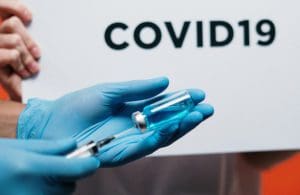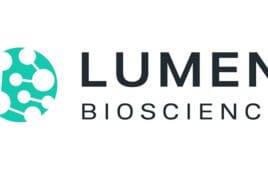
[Photo from Pexels]
But COVID-19 cases remain elevated following the spread of a series of omicron sublineages, which pose a threat to those vaccinated and naturally infected with various lineages of the coronavirus.
A variety of companies are developing next-generation COVID-19 vaccines that could potentially optimize the strength and durability of immune protection compared to the first crop of vaccines.
Here, we round up notable COVID-19 vaccine candidates that, at least, could help pave the way for the fall 2022 booster drive.
BNT162b5
Pfizer Inc. (NYSE:PFE) and BioNTech SE (Nasdaq:BNTX) are developing a bivalent COVID-19 vaccine candidate known as BNT162b5 based on the ancestral strain and a BA.2 omicron variant. The vaccine has a modified spike protein design to optimize the immune response against various COVID-19 variants.
The BNT162b5 vaccine candidate is now in a Phase 2 trial. The U.S. study will enroll approximately 200 participants between the ages of 18 and 55.
The companies recently filed a submission with the European Medicines Agency (EMA) for an Omicron-adapted bivalent COVID-19 vaccine candidate. In addition, the companies announced that the vaccine candidate was based on the BA.1 sub-lineage of omicron. The companies are pursuing authorization for individuals 12 years old and up.
While Pfizer has not selected a final COVID-19 booster candidate for the fall, the company will “likely” be able to deliver an updated vaccine in the early fall, CEO Albert Bourla said in an interview with Barron’s.
Pfizer/BioNTech vaccines targeting omicron BA.1 and B.A4/5
Earlier this year, Pfizer and BioNTech announced they were developing a bivalent omicron-adapted vaccine that is now in clinical trials. The vaccine encodes both the ancestral SARS-CoV-2 spike protein and the spike protein for the omicron BA.1 variant. The companies have already shared data from a Phase 2/3 study of BNT162b2.
The companies are also developing a vaccine candidate based on the omicron omicron BA.4/5 sub-lineage. On August 22, Pfizer and BioNTech had confirmed they are seeking emergency use authorization in the U.S. for a bivalent vaccine based on the BA.4/5 sub-lineage and the original SARS-CoV-2 strain.
mRNA-1273.222
A dose of Moderna’s (Nasdaq:MRNA) mRNA-1273.222 bivalent booster candidate combines 25 µg of omicron BA.4/5 mRNA and 25 µg of its FDA-approved Spikevax COVID-19 vaccine. The company is developing the vaccine based on recent FDA feedback.
mRNA-1273.214
Moderna’s bivalent vaccine mRNA-1273.214 is based on the original SARS-CoV-2 virus and the first omicron version. It outperformed the company’s original vaccine in a June 2022 analysis, offering significantly higher omicron neutralizing titers when administered as a fourth dose compared to its original vaccine, mRNA-1273.
The mRNA-1273.214 booster is “the only candidate expected to have demonstrated significantly higher titers against the BA.4/5 strain in a clinical trial [compared to a currently authorized booster] before the fall booster season,” Moderna explained in a press release.
Moderna also noted that a fourth dose of mRNA-1273.214 yielded similar local reactogenicity to the second and third doses of mRNA-1273 vaccine. According to a presentation shared with FDA, a dose of mRNA-1273.214 bolstered protection against omicron BA.4/BA.5 one month after administration in recipients who had received three initial doses of mRNA-1273.
In a July press release, Moderna indicated that some countries have expressed a preference for the mRNA-1273.214 vaccine candidate over the mRNA-1273.222 version.
mRNA-1273.529
Moderna’s (Nasdaq:MRNA) omicron-based vaccine candidate mRNA-1273.529 is now the focus of a Phase 2 study. With the FDA, however, backing a bivalent booster vaccine design, mRNA-1273.529 is more likely to provide content to the study of mRNA-1273.214, a vaccine with a bivalent design targeting the first version of omicron and the original virus.
CV0501 and CV2CoV
The biopharma CureVac (Nasdaq:CVAC) has launched a Phase 1 study of its modified COVID-19 mRNA vaccine candidate CV0501 based on the omicron variant.
The vaccine candidate uses chemically modified mRNA developed in partnership with GSK.
The vaccine is based on the Tübingen, Germany–based company’s second-generation mRNA backbone.
The company is also conducting a Phase 1 U.S. study of the unmodified mRNA candidate CV2CoV that is based on the original virus variant.
In April, the company announced positive data related to another second-generation COVID-19 vaccine candidate based on the beta and delta variants.
“As we extend the clinical studies of our second-generation backbone into modified mRNA, targeting the omicron variant will further explore the full potential of our improved second-generation design as a booster vaccination for a relevant variant,” said CureVac, interim chief development officer Dr. Ulrike Gnad-Vogt, in a news release.
The company anticipates that its tests on unmodified and modified next-generation vaccine candidates will help it identify the best candidates for a late-stage clinical development.
Sanofi-GSK next-generation COVID-19 booster
Based on the beta variant, the Sanofi-GSK COVID-19 booster candidate offered a significant boost in antibody titers against the omicron BA.1 lineage. The companies also noted that, in the independent COVIBOOST (VAT013) study, the booster candidate yielded a superior immune response than the first-generation Pfizer-BioNTech vaccine booster. The companies’ first-generation vaccine stalled in late 2020 after it failed to generate a sufficient immune response in recipients over 50.
Vaccine based on the SARS-CoV-2 nucleocapsid protein
EpicentRx, a biotech focused on multiple immune-mediated disorders, is developing a next-gen COVID vaccine for SARS-CoV-2 based on nucleocapsid instead of the spike protein. The company anticipates that such a vaccine will be more resistant to new COVID-19 variants.
NVX-CoV2373
Novavax is seeking regulatory authorization in the U.S. (NASDAQ: NVAX) to use its NVX-CoV2373 vaccine as a booster in adults.
In July, the company won belated U.S. authorization for primary immunization against COVID-19.
Demand for the vaccine has been limited to date as much of the U.S. population is already at least partly vaccinated against COVID-19.
This article was updated with new information on August 18, 2022.
Filed Under: Infectious Disease





Tell Us What You Think!
You must be logged in to post a comment.